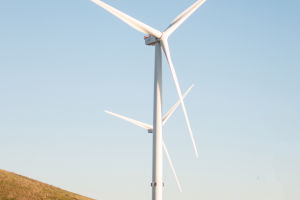
Wind Energy

Wind energy has emerged as one of the most promising renewable energy sources in recent decades.
Harnessing the power of wind through turbines to generate electricity offers a clean, sustainable alternative to fossil fuels.
As technology advances and climate change pressures intensify, the question arises: will the potential of wind energy resources be unlimited? While wind energy holds immense promise, several factors must be considered to understand its true potential and limitations.

The Current State of Wind Energy
Wind energy has seen substantial growth globally, driven by technological advancements and supportive policies. According to the Global Wind Energy Council, the global wind power capacity reached 743 GW by the end of 2020.
Related
 Switzerland's 2-Kilometer Train: You Won't Believe How This Mega Train Works!
Switzerland's 2-Kilometer Train: You Won't Believe How This Mega Train Works!
 You Won't Believe What This Ancient Boat Reveals About Bangladesh’s Hidden Traditions!
You Won't Believe What This Ancient Boat Reveals About Bangladesh’s Hidden Traditions!
 Paper and plastic cups each have pros and cons, but neither is more eco-friendly overall.
Paper and plastic cups each have pros and cons, but neither is more eco-friendly overall.
 In the ocean's depths, a colossal trawler reigns supreme, symbolizing both innovation and controversy in fishing.
In the ocean's depths, a colossal trawler reigns supreme, symbolizing both innovation and controversy in fishing.
 Wind turbines aren’t as eco-friendly as they seem, with hidden environmental impacts from production to disposal.
Wind turbines aren’t as eco-friendly as they seem, with hidden environmental impacts from production to disposal.
 High mountains stay snowy despite being closer to the sun due to altitude, reflection, and thin air.
High mountains stay snowy despite being closer to the sun due to altitude, reflection, and thin air.
Countries like China, the United States, and Germany have invested heavily in wind energy infrastructure, significantly contributing to the reduction of greenhouse gas emissions and the transition to cleaner energy sources.
Wind turbines have become more efficient and cost-effective over the years. Modern turbines can capture wind at lower speeds and convert it into electricity with greater efficiency.
Offshore wind farms, which take advantage of stronger and more consistent winds over oceans, have also expanded, offering significant potential for energy generation.
Theoretical Unlimited Potential
Theoretically, wind energy could be considered unlimited because wind itself is a renewable resource. As long as the sun shines and creates atmospheric temperature differences, wind will continue to be generated.
This inherent renewability makes wind energy a compelling option for long-term sustainable energy production.
Additionally, advancements in technology and innovation could further enhance the efficiency and capacity of wind turbines.
New materials, designs, and installation techniques are continuously being developed, potentially increasing the amount of energy that can be harvested from wind resources.
Floating wind farms, for instance, could tap into deeper ocean waters where wind is even more abundant and steady.
Practical and Technical Limitations
Despite the theoretical unlimited potential, several practical and technical limitations must be addressed. One significant challenge is the variability of wind.
Wind speeds fluctuate based on geographic location, weather patterns, and time of year.
This intermittency can make wind energy less reliable compared to more constant energy sources, necessitating the development of effective energy storage solutions and grid management systems to ensure a stable energy supply.
The availability of suitable sites for wind farms also poses a limitation. Onshore wind farms require vast tracts of land, which can lead to conflicts over land use, especially in densely populated or ecologically sensitive areas.
Offshore wind farms, while less constrained by land availability, face challenges related to installation, maintenance, and the higher costs associated with operating in marine environments.
Environmental and Social Considerations
While wind energy is a clean source of power, its development can have environmental and social impacts. Wind turbines can affect local wildlife, particularly birds and bats, which may collide with the rotating blades.
Efforts are being made to design more wildlife-friendly turbines and to carefully select sites to minimize these impacts.
The visual and auditory impact of wind farms is another concern. Some communities may oppose wind projects due to the perceived disruption to scenic landscapes and noise from turbine operations.
Balancing the benefits of wind energy with the concerns of local communities is crucial for the sustainable expansion of wind resources.